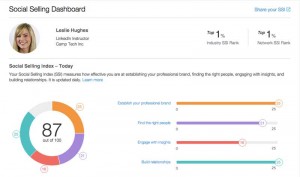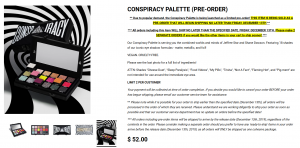
More than 71% of B2B marketers currently include videos in their marketing mix. For organizations looking for ways to elevate their content marketing, videos can be a great addition. Whether video marketing is something you have mastered or are just beginning to explore, these tips can help with planning, strategy and topic formation.
Video Marketing Strategy
Know Your Audience
Use buyer personas to gain more insight and understanding into what types of videos your audience would want to consume. The demographic, behavioral and psychographic characteristics, along with insights about the pain points and goals of your buyer personas are particularly instructive as to what types of videos and topical focuses make the most sense.
Establish a Plan
It is difficult to create videos without a detailed plan. Start with a video brief that articulates the target audience, call(s) to action, distribution channels, hosting source, estimated/desired length, voice and style considerations and any special resources required. Then, use this information to construct a timeline that includes pre-production (e.g., script writing), production (e.g., actual filming) and post-production (e.g., editing and publishing) elements.
Data and Analytics
Once videos are published, it’s important to understand how well they are performing. While there is a variety of data that you can compile, here are some of the most important metrics for videos.
- Views. The number of video views signals how many people a video is reaching and what type of interest it’s getting. Look at daily view metrics for spikes or drop-offs and track total view trends over time. Consider factors related to where each video was promoted, what topics were focused on, and how long each has been in place.
- Engagement. From those that viewed the video, what was their engagement like? Did they like, share or comment? If on YouTube, what is the ratio of thumbs-up vs. thumbs-down clicks? Collecting and analyzing engagement can inform actions that will drive higher viewer engagement.
- Length of View. How much time someone invests in your video matters. What percentage views the video in its entirety? At what point do most others exit? Different audiences and different topics will demand different lengths. Use data to help find what’s right for your audiences.
Goals of Video Marketing
Every video should be produced with clear and documented objectives in mind.
- Build Trust. Value-added videos can lead audiences to come back again and again. Each helpful video adds to one’s credibility. The more that your audience trusts you, the more their content consumption and likelihood of becoming a buyer increases as well.
- Drive Valuable Traffic. Adding videos to your website can increase your chances of getting featured on the first page of Google by 53 times. It also helps visitors stay on a web page longer once they get there.
- Provide Knowledge. One of the most important aspects of video marketing is to help your audience gain knowledge of a topic, brand, product, or service offering. 79% of consumers would rather watch a video to learn about a product or topic than by other means.
Videos in Your Buyer’s Journey
A variety of video types are essential for catering to each stage of the buyer’s journey. Here are some examples of video content that you can create and distribute to your audience.
- Awareness: Address audience pain points and start building awareness and trust.
- Short videos that emphasize your brand values, culture and mission
- Thought leadership videos
- Educational how-to videos that address common pain points
- Consideration: Explore focused content that looks at alternative solutions and paths.
- Promotional videos on your website
- Additional videos that emphasize your brand and culture
- Decision: Narrow in on key benefits, product comparisons and results.
- More in-depth/educational how-to videos
- Testimonials of customers
- In-depth product demos
- Personalized videos explaining directly to them and their pain points
- Retention: Show how even more can be achieved.
- In-depth how-to videos to make the most of your product/service or tricks that will help simplify something for them
- Customer only webinars/videos that give them focused content that only they will be allowed to consume
- Advocacy: Continue building a positive brand reputation and community engagement.
- Additional webinars that are industry or topic-specific to give even more information
- Exclusive content that only your buyers can view, either at a free cost or a sneak peek before others
Videos are an engaging and exciting form of content that can amp up one’s content marketing strategy and mix. Using these strategies and tips can help you deliver the most relevant and optimized videos to the audiences that matter most for your organization.
Digital & Social Articles on Business 2 Community
(127)









